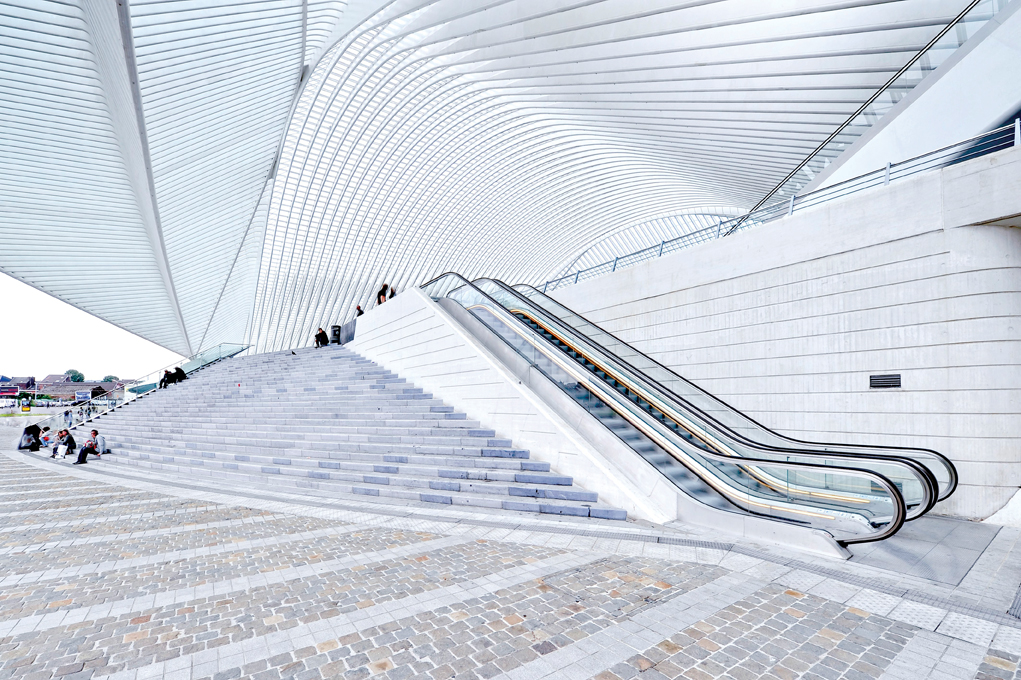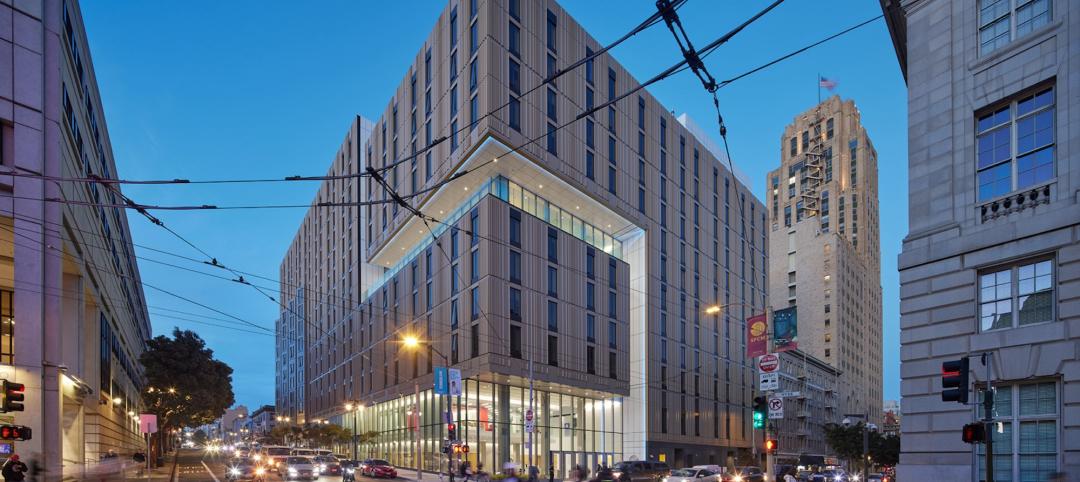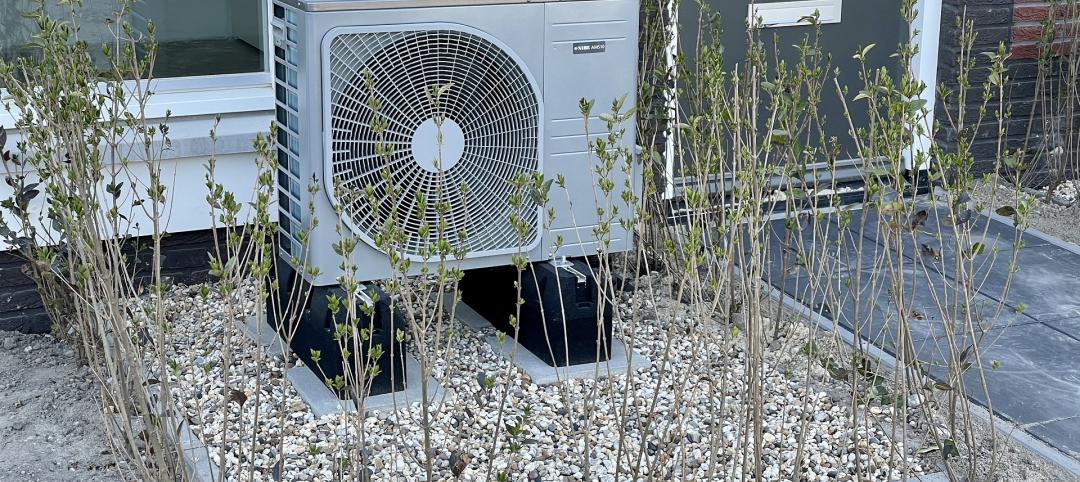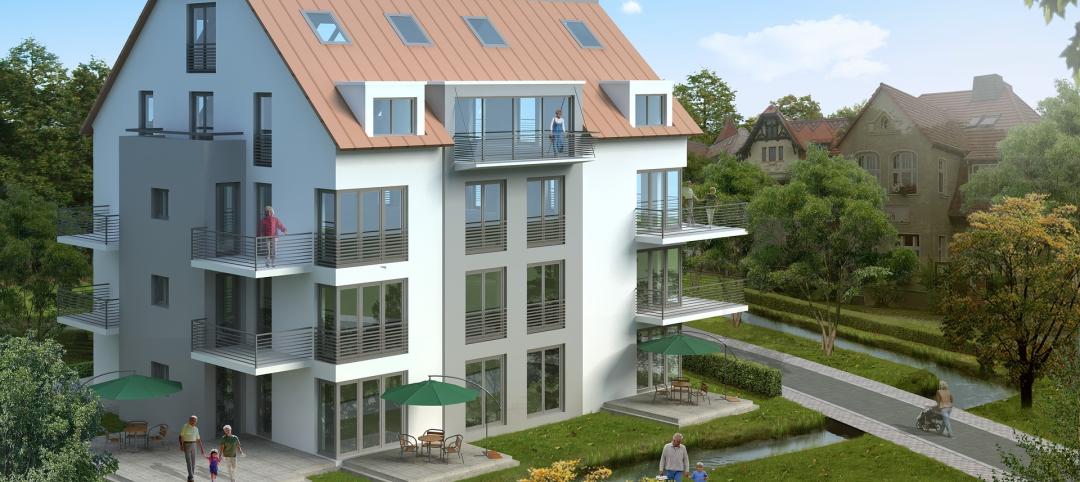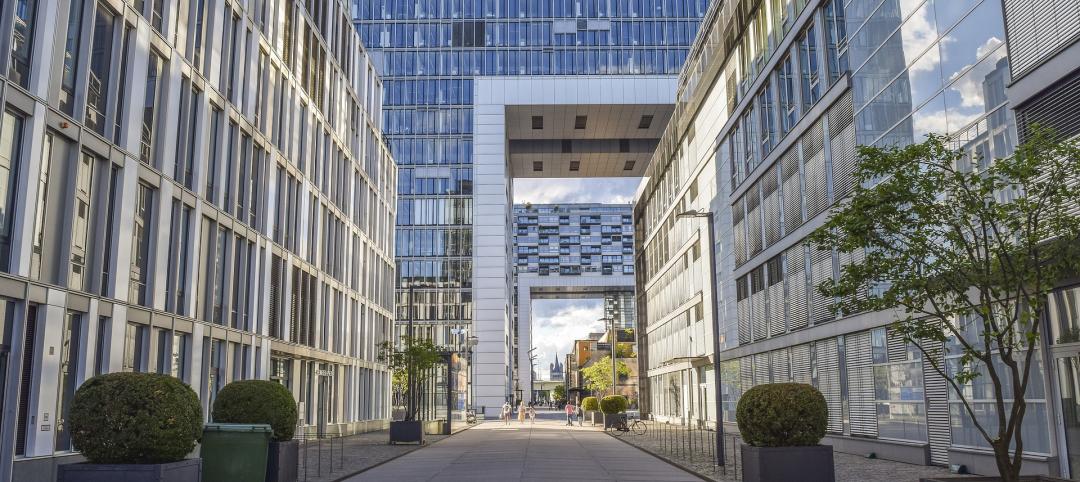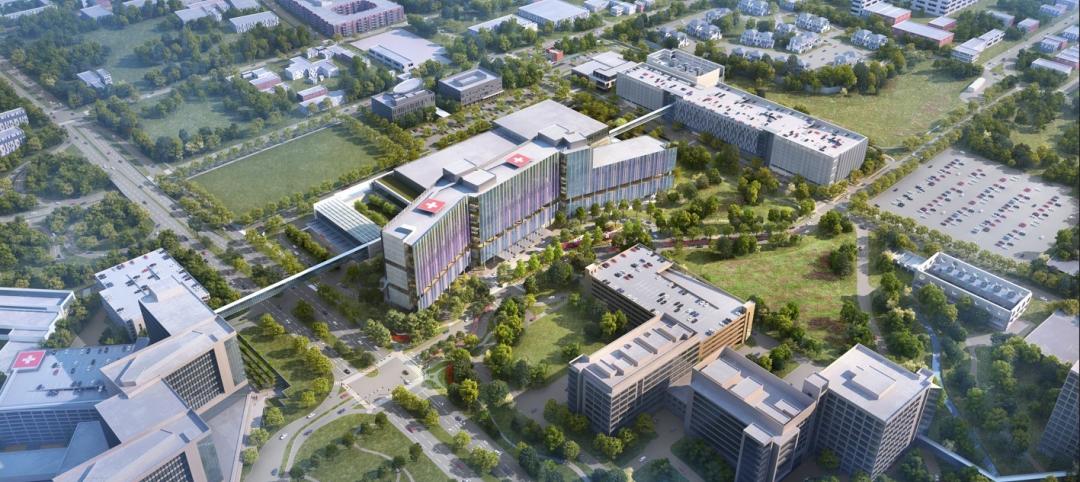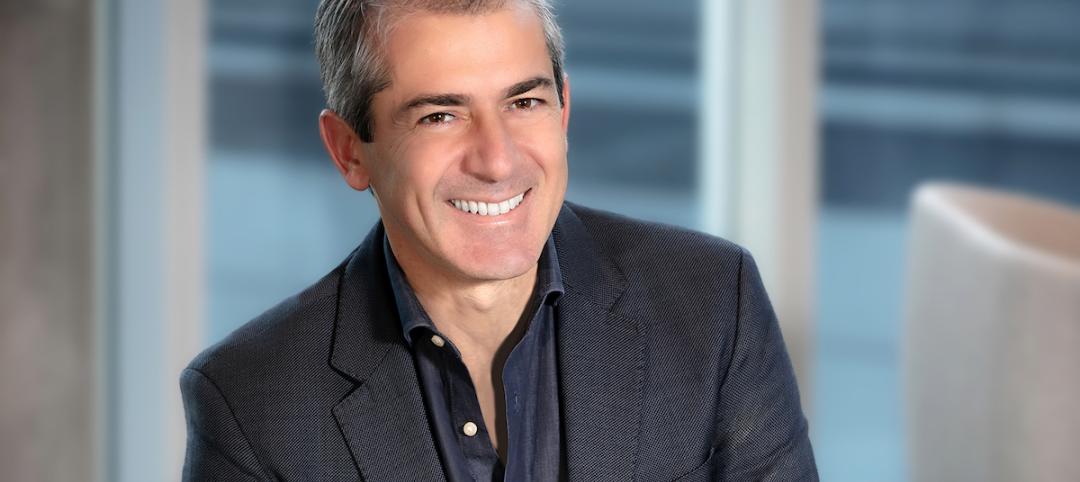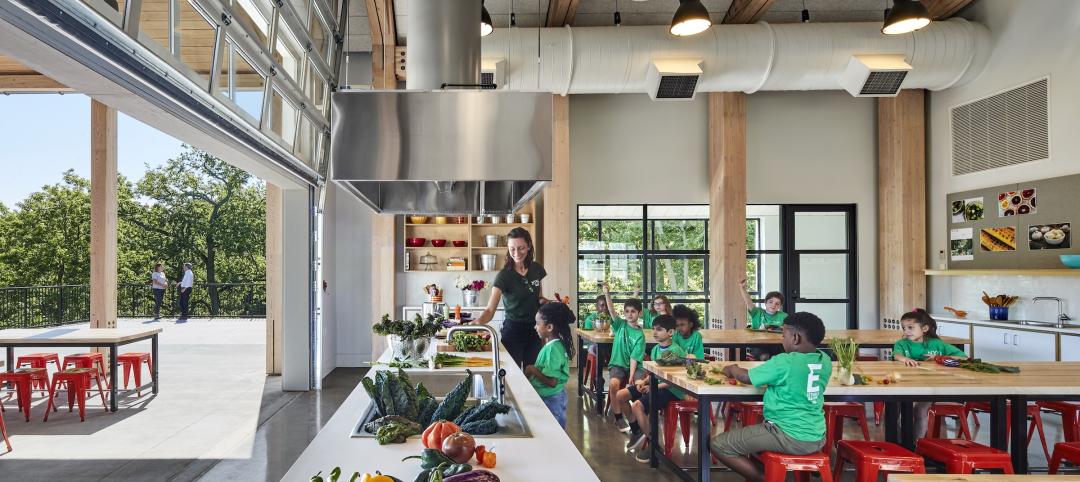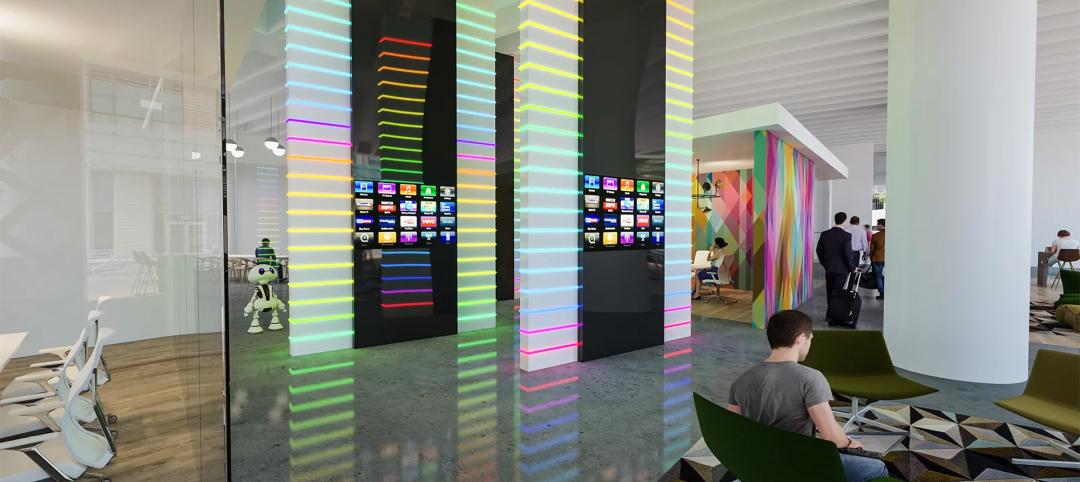As they hone in on LEED certification, Building Teams need to look at the energy efficiency of every product and system that goes into a project, including vertical transport systems—elevators and escalators. Building owners and facility managers who are under pressure to reduce energy consumption and increase building efficiency are finding that one of the most economical solutions is to modernize and upgrade elevators.
Many of the same technological advancements that are improving energy efficiency in elevators are being applied to escalators. The end result is vertical transport systems that reduce a building’s operating costs and improve sustainability.
Several recent VTS innovations have been fine-tuned to better serve the nonresidential market.
TWEAKING MACHINE-ROOMLESS ELEVATORS
Over the past decade, machine-roomless (MRL) elevators have gained acceptance for a number of reasons: 1) they don’t require a separate machine room or electrical closet because the machinery is self-contained within the hoistway; 2) their motors are smaller and generate less heat; and 3) they don’t use petrochemical-based lubricants.
Sam Huleis, LEED AP, a senior project manager with C.W. Driver, a design-build firm in Pasadena, Calif., says that in addition to simplifying design and construction, MRLs use 40-50% less energy than conventional elevators, reducing operating costs for the building owner. C.W. Driver utilized Otis Elevator Co.’s Gen2 MRL traction elevators at the recently completed Valley Performing Arts Center at the California State University, Northridge.
“The Gen2 elevators use an in-hoistway motor and sheave system along with a unique flat-belt cable system,” Huleis says. “These polyurethane-coated steel belts take up less space than conventional braided steel cables and produce a quieter operation and a smoother ride. In addition, there’s no need to lubricate the belts or machinery.”
Another MRL innovation is the regenerative drive system, which feeds energy usually lost during braking back into the building’s electrical grid, where it can be used for other purposes such as stairwell lighting. Regen drives are standard on the Gen2, says Rick Pulling, director of worldwide new equipment for Otis Elevator.
Gen2 elevators with regen drives were used in the Proximity Hotel in Greensboro, N.C., the only LEED Platinum hotel in the U.S. “The energy aspect was a huge factor” in the choice of MRL and the Gen2 regenerative drive system, says Jeff Kennedy, general manager for Quaintance-Weaver Services, the GC arm of hotel operator Quaintance-Weaver Restaurants & Hotels. Kennedy says that, while it has been difficult to get an exact measurement on energy savings due exclusively to the use of the regen drive, he has been assured by the mechanical engineer he contracts with that “the elevators are the single largest energy saver in the building.”
Newer MRLs such as Schindler Elevator Corp.’s 3300 and Kone’s EcoSpace are designed specifically for low-rise buildings. Schindler claims the cab of its 3300 model is 5% larger than a traditional MRL or hydraulic elevator. ThyssenKrupp’s synergy line is available in six different designs to fit virtually any building, offering speeds ranging from 150 to 500 feet per minute.
In low-rise buildings, the first cost of an MRL is approximately 10% more than its hydraulic counterpart, says Michael Landis, vice president of Schindler Elevator Corp. But since the contractor doesn’t have to build a machine room or electrical closet with air conditioning, the savings can run to roughly $10,000, he says.
Latest Trends in Elevators and Escalators
- The latest machine-roomless elevators are designed specifically for low-rise buildings.
- More advanced destination dispatch technology saves energy and allows building owners to deliver a higher level of personalized elevator service and security.
- LED lighting in cabs reduces heat loss and increases lifespan.
- Urea formaldehyde-free elevator panels improve indoor air quality.
- Regenerative drives transfer unused energy back into the building’s electrical grid for other uses.
- Remote monitoring ensures seamless adjustments and repairs and minimizes costly elevator down time.
- Variable-speed escalators conserve energy by automatically slowing down during off-peak usage periods.
DESTINATION DISPATCH GETS PERSONAL
Destination dispatch technology is a sophisticated traffic management tool that has undergone recent improvements. Such systems do away with traditional up/down buttons; instead, passengers use keypads or interactive touchscreens to register floor calls. They are then assigned to specific cars, minimizing the number of starts and stops required as well as wait and travel times. Newer systems such as Schindler’s Personal Occupant Requirement Terminal (PORT) utilize card-reading technology through radio frequency waves.
Destination-dispatch can be used to put individual cars in standby mode when they’re not needed, shutting down lighting and ventilation. Building owners can use it to maintain security; for instance, they could restrict access by delivery people. People with special needs are discreetly assigned to elevators that can accommodate them. In hospitals, destination dispatch automatically directs medical personnel to elevators sized for gurneys or crash carts.
Building management firm Golub & Co. installed a destination dispatch system as part of an18-month elevator modernization project at 680 N. Lake Shore Drive in Chicago. Over the course of a single weekend, Schindler ID terminals and controllers were interfaced with existing elevator controllers, offering an immediate improvement in efficiency. The existing elevators were refurbished and components were replaced as necessary.
Taking the elevators out of service would have been a major inconvenience for the building’s medical and office tenants, says Tim Conway, general manager for Golub. Working with VTS consultant Desmond Associates of Carpentersville, Ill., the firm chose Schindler for the project “because they were able to put the destination technology on the front end,” says Conway. End users didn’t notice when a car was out of service because the destination interface was there to direct them to the right elevator.
“We’re trending toward about a 23% reduction in energy usage,” Conway says. “We’ve also done some traffic studies with wait time and destination time, and those have improved closer to 50%. It’s incredible.”
Huleis says that with destination dispatch systems, control panels can be placed anywhere in the building, eliminating in-cab controls. “This feature is mostly useful on high-rise buildings,” he says.
Double-deck elevators have traditionally been used in very tall buildings because they can move large numbers of people with fewer cabs. Typically, the top deck serves the even-numbered floors, the bottom deck the odd-numbered floors.
“Double-deckers can reduce the need for space in the core of a building from 30-45%,” says Otis’s Pulling. While they can be installed as part of a modernization, they require significant project management and front-end planning, which is why they’re more common in new construction “where you design to a specific core requirement,” he says.
A look to the future: Schindler is currently developing a three-deck elevator.
GETTING DESIGN CONSIDERATIONS RIGHT
It may seem obvious, but elevators should always be designed based on the intended use of the building and the volume of traffic anticipated. “Traffic patterns are dependent on each floor’s population and whether the building is open for business 24/7, such as a hotel versus an office building,” says Brad Nemeth, director of sustainability for ThyssenKrupp Elevator Americas.
High-rise buildings may require customized engineering to compensate for elevator speeds approaching 2,000 meters (about 6,500 feet) per minute. “At these speeds,” Nemeth says, “aerodynamic considerations must be factored in along with pressure differentials above and below the elevator cab, which can produce vibration and excessive noise.”
In terms of energy efficiency, architect Brian Sipes, AIA, LEED AP, principal of Zehren & Associates in Avon, Colo., says MRLs perform as advertised, but their higher first cost is justifiable depending on how often the elevator is going to be used. “If it’s less than once a day, there’s no payback,” he says. “If it’s frequently, MRLs are an easy sell if you can prove the return on investment.”
One caveat: If a client wants high-end elevator finishes, MRLs may not be an option. Many of Zehren’s projects are ski and golf resorts where custom millwork on the walls and stone floors are a must, partly for aesthetics and partly to shield against damage from ski boots and golf cleats. “In those cases we have to go with traditional hydraulic elevators because they don’t have the design or weight limitations of an MRL,” Sipes says. BD+C
Related Stories
Student Housing | Feb 19, 2024
UC Law San Francisco’s newest building provides student housing at below-market rental rates
Located in San Francisco’s Tenderloin and Civic Center neighborhoods, UC Law SF’s newest building helps address the city’s housing crisis by providing student housing at below-market rental rates. The $282 million, 365,000-sf facility at 198 McAllister Street enables students to live on campus while also helping to regenerate the neighborhood.
MFPRO+ News | Feb 15, 2024
UL Solutions launches indoor environmental quality verification designation for building construction projects
UL Solutions recently launched UL Verified Healthy Building Mark for New Construction, an indoor environmental quality verification designation for building construction projects.
MFPRO+ News | Feb 15, 2024
Nine states pledge to transition to heat pumps for residential HVAC and water heating
Nine states have signed a joint agreement to accelerate the transition to residential building electrification by significantly expanding heat pump sales to meet heating, cooling, and water heating demand. The Memorandum of Understanding was signed by directors of environmental agencies from California, Colorado, Maine, Maryland, Massachusetts, New Jersey, New York, Oregon, and Rhode Island.
MFPRO+ News | Feb 15, 2024
Oregon, California, Maine among states enacting policies to spur construction of missing middle housing
Although the number of new apartment building units recently reached the highest point in nearly 50 years, construction of duplexes, triplexes, and other buildings of from two to nine units made up just 1% of new housing units built in 2022. A few states have recently enacted new laws to spur more construction of these missing middle housing options.
Green | Feb 15, 2024
FEMA issues guidance on funding for net zero buildings
The Federal Emergency Management Agency (FEMA) recently unveiled new guidance on additional assistance funding for net zero buildings. The funding is available for implementing net-zero energy projects with a tie to disaster recovery or mitigation.
Hospital Design Trends | Feb 14, 2024
Plans for a massive research hospital in Dallas anticipates need for child healthcare
Children’s Health and the UT Southwestern Medical Center have unveiled their plans for a new $5 billion pediatric health campus and research hospital on more than 33 acres within Dallas’ Southwestern Medical District.
Architects | Feb 13, 2024
Pierluca Maffey joins Carrier Johnson + Culture as new Firmwide Head of Design
Carrier Johnson + Culture (CJ+C) has hired Pierluca “Luca” Maffey, International Assoc. AIA, as the firm's new Firmwide Head of Design and Design Principal.
K-12 Schools | Feb 13, 2024
K-12 school design trends for 2024: health, wellness, net zero energy
K-12 school sector experts are seeing “healthiness” for schools expand beyond air quality or the ease of cleaning interior surfaces. In this post-Covid era, “healthy” and “wellness” are intersecting expectations that, for many school districts, encompass the physical and mental wellbeing of students and teachers, greater access to outdoor spaces for play and learning, and the school’s connection to its community as a hub and resource.
Office Buildings | Feb 13, 2024
Creating thoughtful tech workplace design
It’s important for office design to be inspiring, but there are some practical principles that can be incorporated into the design of real-world tech workplaces to ensure they convey an exciting, sophisticated allure that accommodates progressive thinking and inventiveness.
Airports | Feb 13, 2024
New airport terminal by KPF aims to slash curb-to-gate walking time for passengers
The new Terminal A at Zayed International Airport in the United Arab Emirates features an efficient X-shape design with an average curb-to-gate walking time of just 12 minutes. The airport terminal was designed by Kohn Pedersen Fox (KPF), with Arup and Naco as engineering leads.


